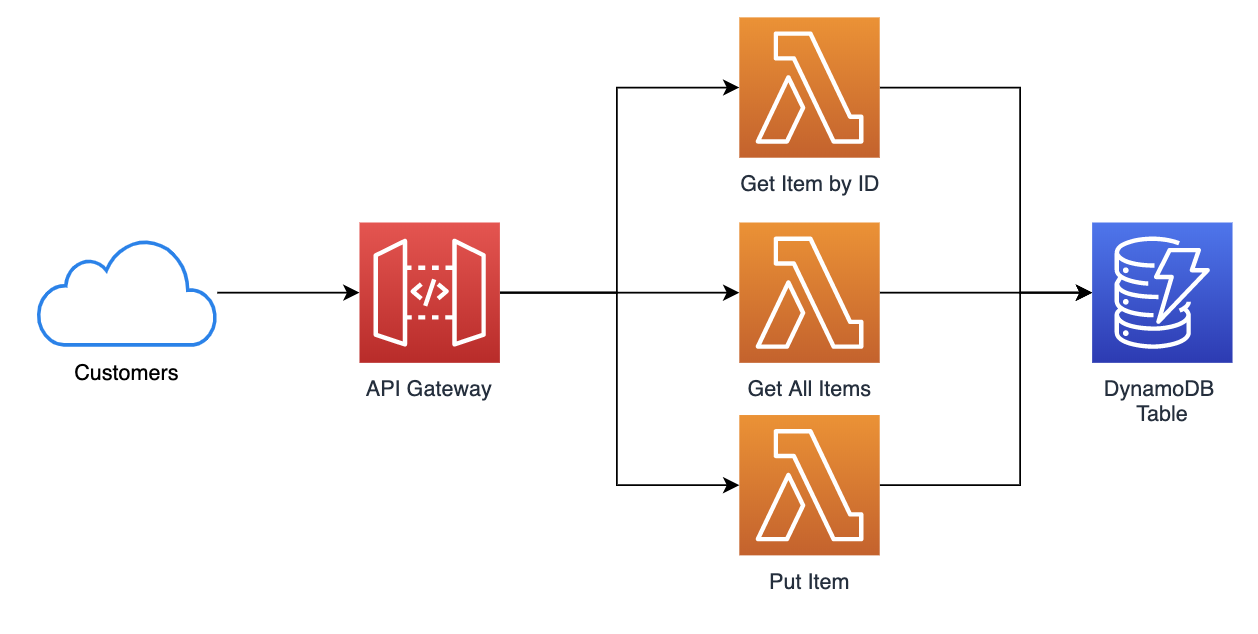Serverless application structure
When creating our sample application, we are going to deploy an application containing the following resources:

Even though there’s no single source of thruth, a good rule of thumb to follow when structuring your serverless applications using SAM can be adopting the following structure:
content
├── __tests__ <-- Parent folder for all tests
│ ├── unit <-- Parent folder for all unit tests
│ │ ├── items <-- Parent folder for tests of a logical context
│ │ │ └── put-item.test.js <-- put-item service unit tests
│ │ │ └── get-all-items.test.js <-- get-all-items service unit tests
│ │ │
├── src <-- source code of our microservices
│ ├── items <-- Parent folder for a logical context
│ │ ├── get-all-items <-- Parent folder for a single lambda function
│ │ │ ├── event.json <-- Sample payload for local/unit testing
│ │ │ └── index.js <-- get-all-items Lambda function
│ │ │
│ │ ├── put-item <-- Parent folder a function within the same context
│ │ │ ├── event.json <-- Sample payload for local/unit testing
│ │ │ └── index.js <-- put-item Lambda function
│ │ │
│ │ ├── another-item-service <-- Parent folder a function within the same context
│ ├── another-business-context <-- Different logical context (e.g. users)
│ ├── lib <-- commons lib
├── template.yaml <-- SAM definition file
└── package.json <-- Node.js dependencies
└── buildspec.yml <-- AWS CodeBuild script for building our application
└── testspec.yml <-- AWS CodeBuild script for executing unit tests
└── style-checker.yml <-- AWS CodeBuild script for static code analysis
This sample application will be built using Node.js and this structure tree might differ for other languages.